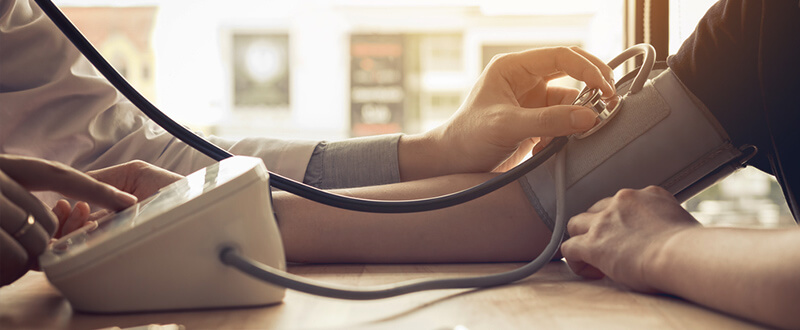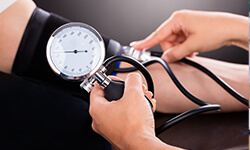Pseudo Hypertension Causes and Diagnosis

Table of Contents
While the blood flow provides oxygen to various body cells and removes carbon dioxide, the difference in its pressure can cause complications in the body. Hypertension is termed as a condition when the blood pressure levels are 140/90 mmHg and above. Ideally, blood pressure has to be maintained at around 120/80 mm Hg. It is a cause of concern if the blood pressure goes above these levels, and is the emergency if it is above 180/110. Although hypertension is a commonly observed lifestyle disease, it is difficult to be diagnosed as it may not show any immediate symptoms. No wonder it is called a ‘Silent Killer’, it may lead to severe conditions like stroke and heart attack if left untreated. The following measures and BP medication can treat high BP or hypertension:
What is Pseudo Hypertension?

Causes

Diagnosis

- If the cuff pressure readings are high, but there is no sign of organ damage.
- When the patient exhibits symptoms of low blood pressure (like dizziness and confusion) after starting treatment for high BP.
Conclusion

Note of Caution: This article is for information purpose only. Always consult your doctor in case of any blood pressure or other health-related problems.
Disclaimer
The information contained in this article is to educate, spread awareness in relation to hypertension and other diseases to the public at large. The contents of this article are created and developed by BPinControl.in through its authors, which has necessary, authorisations, license, approvals, permits etc to allow usage of this articles on The Website. The views and opinions expressed in this article are views, opinions of the respective authors and are independently endorsed by doctors. Although great care has been taken in compiling and checking the information in this article, The Website shall not be responsible, or in any way liable for any errors, omissions or inaccuracies in this article whether arising from negligence or otherwise, or for any consequences arising therefrom. The content of this article is not a substitute for any medical advice. The Website shall not be held responsible or liable for any consequence arising out of reliance on the information provided in the article.

 Regular check-up
Regular check-up Low sodium and high fiber diet
Low sodium and high fiber diet Maintaining a healthy weight and BMI
Maintaining a healthy weight and BMI Regular exercise
Regular exercise Avoiding smoking and alcohol
Avoiding smoking and alcohol Medications such as diuretics, ACE inhibitors, ARBs, calcium channel blockers, beta-blockers, etc.
Medications such as diuretics, ACE inhibitors, ARBs, calcium channel blockers, beta-blockers, etc.
Comments (8)
Shradha
What causes hypertension? What kind of problems can it lead to?
Chetan
How can a medical expert correctly diagnose Pseudohypertension?
Rashmi
What can lead to an incorrect diagnosis of hypertension?
Niharika
What measures can be taken to keep hypertension in check?
Add your comment